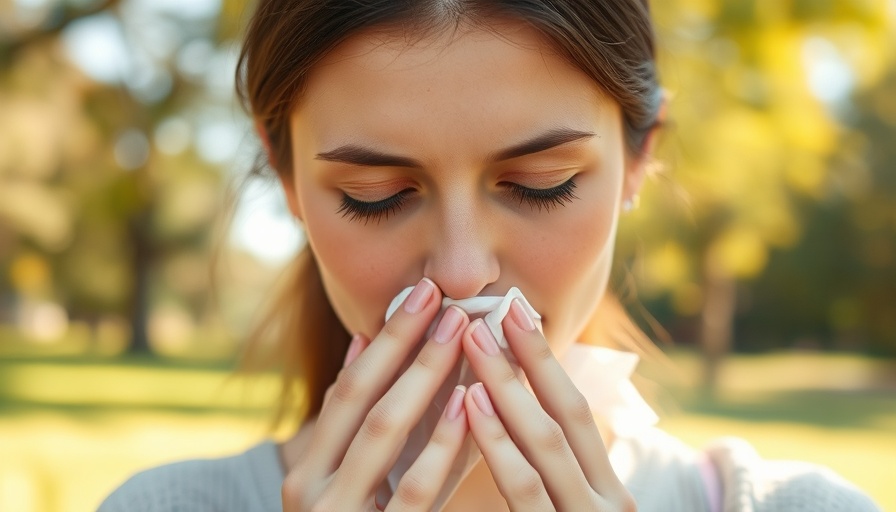
Understanding Early Season Hay Fever
While most people associate hay fever with the warmer months of spring and summer, it's crucial for sufferers to realize that the season for allergens doesn’t wait for summer to arrive. In February, specific trees can release pollen that can trigger hay fever symptoms. Alder, hazel, elm, and willow trees can start pollinating as soon as the weather allows, creating potential issues for those who are sensitive to tree pollen.
Recognizing Symptoms of Hay Fever
For those affected, early season hay fever can bring a wave of frustrating symptoms. Common manifestations include sneezing, nasal congestion, runny or itchy eyes, and even headaches. More severe cases might lead to throat irritation and a general sense of fatigue due to disrupted sleep caused by nasal blockage. As highlighted in various resources, including advice from medical professionals, being aware of these symptoms is the first step in managing them effectively.
Taking Proactive Steps Towards Management
We often focus solely on treating hay fever after symptoms appear; however, an alternative approach is to prevent these reactions before they can take root. One effective prevention strategy involves utilizing barrier balms like HayMax Pure Organic Drug-Free Allergen Barrier Balm. This product, retailing at £8.49, acts as a frontline defense, trapping pollen before it can enter the body, thus minimizing the onset of typical symptoms.
Complementing Barrier Strategies with General Allergy Tips
In addition to using barrier balms, it's important to implement some standard allergy management techniques. Recommendations include keeping windows closed during high pollen counts, showering after outdoor activities to wash away any lingering pollen, and avoiding outdoor activities during peak pollen times in the early morning and late afternoon.
Allergy experts also stress the importance of maintaining a clean indoor environment. Regular vacuuming and washing can help minimize the amount of pollen and other allergens present in the home, further reducing the likelihood of an unexpected reaction.
Importance of Knowing Your Allergens
Understanding which specific allergens affect you can dramatically enhance your ability to manage your symptoms. Consulting with a healthcare provider for appropriate allergy testing may uncover sensitivities to certain pollens or related substances, paving the way for more tailored treatment options.
Beyond Natural Remedies: When To Seek Professional Help
While barrier balms and household tips can work wonders, not all cases of hay fever can be managed with home remedies. For severe symptoms, healthcare professionals may prescribe antihistamines or other medications to help alleviate symptoms. Consulting with your doctor can lead to a personalized treatment plan that may include a combination of medication and lifestyle adjustments, enhancing overall well-being.
Conclusion: Be Prepared for Seasonal Changes
As the seasons shift, being pro-active and prepared can change one’s experience of hay fever from reactionary to manageable. Whether it's investing in barrier balm or consulting health professionals, taking these steps can help alleviate the burden of early-season hay fever symptoms. For those affected, awareness and preparation pave the way for not only symptom relief but a better overall quality of life.
 Add Row
Add Row  Add
Add 




 Add Row
Add Row  Add
Add 

Write A Comment